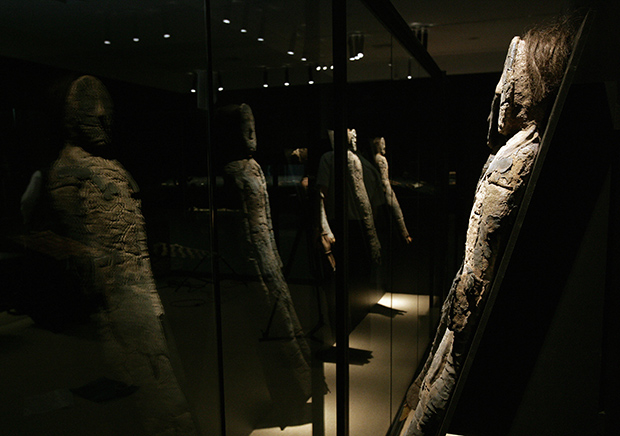But now, curators at the Universidad de Tarapacá museum in Arica, Chile, are worried. Over the past 10 years, some of the mummies in the museum’s collection—the world’s largest—have started to turn to black ooze.
The leading hypothesis for their rapid degradation is that increasing humidity in the area is boosting the growth and metabolism of bacteria that live on the mummies’ skin. For mummies still buried in northern Chile, outside of any climate-controlled museum collection, anthropologists fear the problem may be even worse.
The Chinchorro mummies, believed to be up to 1,000 years older than Egyptian mummies, are from the Atacama Desert region of South America. Close to the Pacific Coast, but west of the Andes Mountains, the region is a high plateau with a mild desert climate. Temperatures traditionally range from 64oF (18oC) in the winter to 79oF (26oC) in the summer, and average annual precipitation of less than a ¼ of an inch.
Despite its lack of rainfall, the average relative humidity reaches 70% in places. The high relative humidity is due to the frequent fog that drifts in from the Pacific. The marine fog—which locals call camanchaca—is so abundant that it is tapped for freshwater in some places.
Why does this matter to the mummies?
Much like everything else in the world, the Chinchorro mummies are covered in microbes. In a paper recently published in the Journal of Cultural Heritage, scientists from Harvard University and the Universidad de Tarapacá said these regular residents and other “opportunistic microbes” could be taking advantage of rising humidity to grow, deteriorating the mummies’ skin as they flourish.
To test the hypothesis, the scientists tested the effects of different levels of relative humidity on tiny samples of the Chinchorro mummies’ skin. They found that high humidity levels allowed the microbes to flourish, and the mummies’ skin turned black and began to ooze, similar to the mummies in the collection.

No comments:
Post a Comment